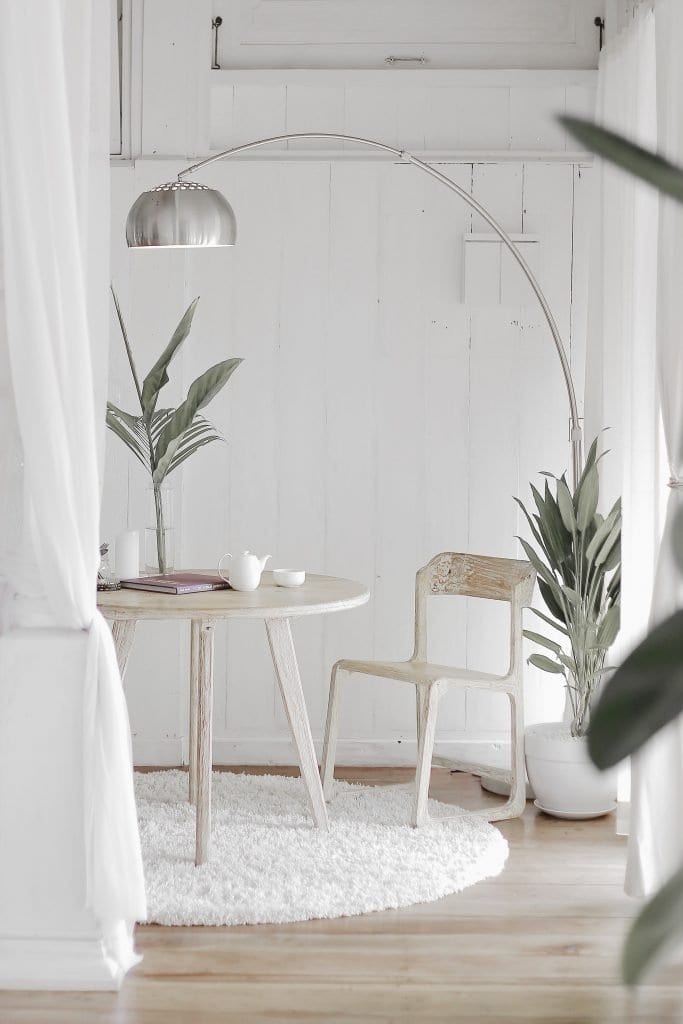Sustainability in Interior Design: In recent years, individuals and global leaders have opened up a conversation about consumer behaviour and the impact that this will have on future generations. This has forced interior designers and home decor brands to start thinking about how their work will impact the world.
Despite this, fast-fashion brands continue to thrive, and IKEA’s annual sales grew by 6.5% in 2019; surpassing 40 billion euros.
It’s clear that, although consumers are having more conversations about environmental sustainability, there is still some confusion regarding how this translates to real-life, beneficial actions.
See Also: A Guide to Sustainable Interior Design
By Dorothy Edgar, of Besp-Oak Kitchens, and the team at EZ Living Interiors
3 Facts about Sustainable Interior Design
1. Only 43% of people believe that buying local is sustainable
Research from Statista shows that there is some confusion around sustainable shopping habits. Over 70% of consumers think that buying second-hand goods is sustainable, whereas less than half of people think that buying local is sustainable.
Buying local goods is beneficial for the environment as it means that they don’t have to travel far to get to your home, lessening the environmental impact of transportation. On the other hand, buying second-hand goods is generally better than buying brand new items, even though it can be difficult to determine whether second-hand goods have been made in an environmentally considerate way.
With that being said, it’s important not to dismiss the efforts of individuals as not being ‘enough’, as this can do more harm than good. Every little helps when it comes to being more eco-conscious; therefore, raising awareness about different kinds of sustainable actions can help to get more people involved.

2. 49% of consumers agree that producers should be responsible for making products and packaging more sustainable
In reality, there are countless ways to be more environmentally-friendly; however, if producers and suppliers do not make changes, no progress can be made. A significant proportion of consumers agree with this, with 49% stating that producers should make the effort to make their products more sustainable.
Many homeware brands are already making the move to becoming more eco-friendly. For example, Rust Collections make luxury furniture from reclaimed wood and Woodmancote Retro create vintage-style furniture from discarded plastic bottles. These examples offer us some hope, and yet there’s a lot more to consider when it comes to sustainable interior design.
3. Interior designers agree that now is the time for change
Established interiors experts such as Emma Merry and Beth and Jon Miller agree that sustainable interior design will be a key trend moving forward. Whether it be sourcing upcycled furniture or buying long-lasting furniture, these small changes will ensure that less is wasted when it comes to interiors.

3 Tips for Designing Interiors More Sustainably
However, there is much more to sustainable interior design than meets the eye, so here are my tips to ensure you’re doing everything you can for the environment:
- Be energy-efficient – Maximising energy efficiency and minimising wastage should be at the heart of all interior design. This can involve installing carpets, curtains and energy-efficient lighting.
- Keep longevity in mind – Consumers are moving away from the ‘throwaway’ culture that we’ve become accustomed to, and the same goes for interior design. Opt for timeless, well-made pieces that will last a long time, so that these can be recycled for future generations.
- Consider the true costs of products – Think of costs aside from monetary value when you purchase interior design products. For example, manufacturing synthetic paints has significant environmental costs due to their toxicity. Thinking about each factor in detail can help you to make more environmentally-sound choices.
How Does Sustainability Relate to Interior Design?
Long-Term Impact of Materials – Today, interior design firms and the building contractors that deal with them are carefully assessing the long-term impact and consequences of construction materials used in design projects. The use of sustainable materials reduces the environmental impact of various materials and substances. When selecting materials for use in new and restored interior spaces, designers are now taking a life-cycle approach. The direct and indirect effects of construction materials and supplies are being examined at all manufacturing stages, usage, and future removal and disposal.
Global Interest in Sustainable Design – When interior designers use sustainable building materials and furniture in their design projects and promote their businesses as sustainable design firms, they spark a valuable global interest in protecting and conserving the environment. More significant corporations and governments around the world are now adopting and supporting ecologically safe techniques in building construction, manufacturing operations, and a wide range of other industries. Sustainable building and interior design projects are also receiving more funding than ever before.
Sustainable Interior Design is a Growing Concept. – Today, sustainable materials are gaining prominence and influence in interior design interpretation. Sustainable materials have significant histories and often exciting stories to tell, and when employed in a well-planned interior design scheme, their continued meaning and essence will emerge. People can sense and relate to the unique travels and life cycles of sustainable materials, which adds an empowering dimension to interior design and decor.
What Are the Current Trends in Interior Design?
An interior design trend is a central concept around which all project pieces are designed. Interior design trends are frequently discussed and demonstrated using interior design tools and applications. Interior design trends have shifted dramatically over the previous decade, rather than emerging from grassroots design movements, the latest ideas are now being controlled by publications and popular fashion channels.
Dorothy Edgar is a representative of Besp-Oak Kitchens. Besp-Oak Kitchens provide high-quality solid oak kitchens and furniture made from sustainably-sourced wood.